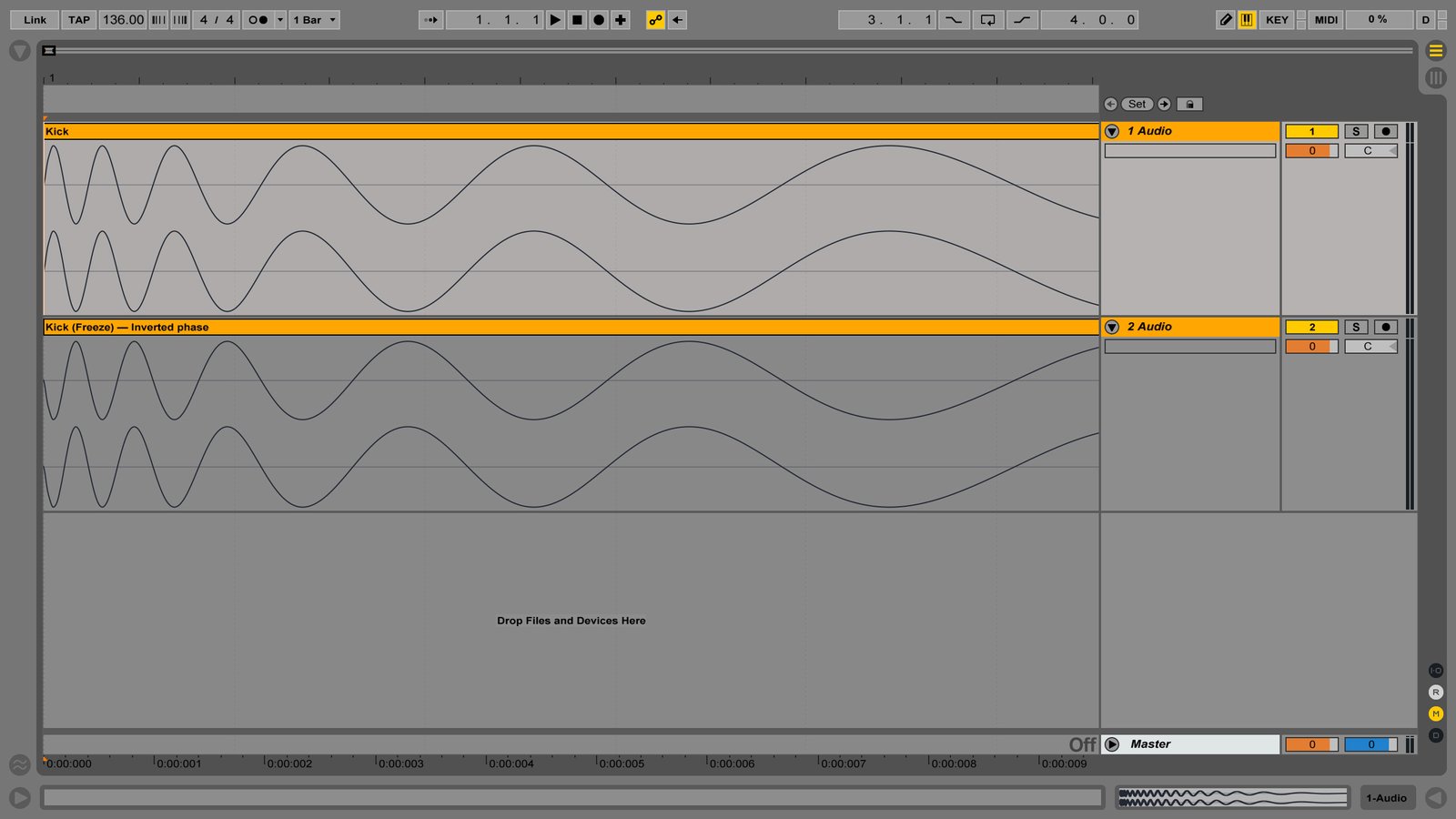Phase cancellation explained
Earlier in the blog, you mentioned “phase cancellation” as one of the reasons why basslines may sound flabby and not punchy enough. Could you explain that please?
Ivan
Let’s take a simple audio sample. I’m going to use a kick drum from some sample library. Just a regular kick, nothing fancy:
Now I’m going to duplicate the channel, add Utility tool to reverse the poles of the phase and flatten this channel into a new piece of audio. Here is what we’ve got:

Take a closer look at the waveforms: their peaks go oppositely. And now, listen to what happens when I’ll playback both of these samples at the same time:
No, your speakers are fine. The result of these two samples playing together is silence — no sound, literally. This is what is called a phase cancellation.
Typically, in the real production, your sounds’ phases won’t be exactly the opposite causing silence like in the example above, but even a subtle miss-phase will cancel some frequencies out. You should keep it in mind, especially when dealing with low-frequency signals like the bassline.
Watch also this excerpt from Lynda’s course. It demonstrates phase cancellation of an acoustic signal, but the principle applies pretty much in every production:




